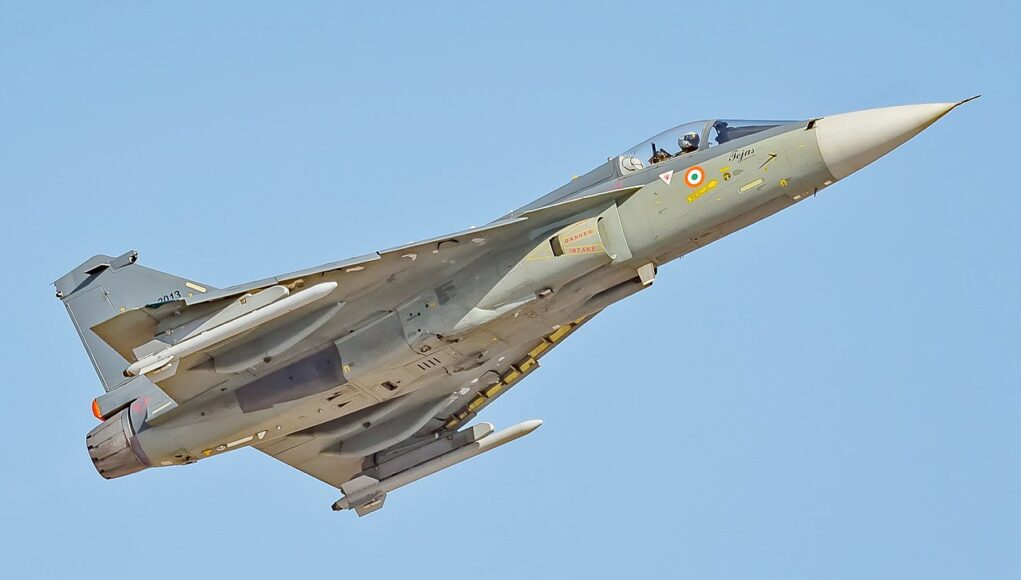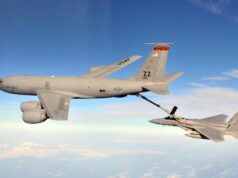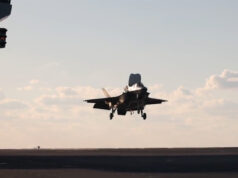Operation Sindoor targets militant camps as tensions spike between nuclear neighbours.
India has conducted missile strikes against targets in Pakistan and Pakistani-administered Kashmir, in what it describes as a “focused and non-escalatory” response to a deadly terror attack last month in Jammu and Kashmir. The strikes, launched under the codename Operation Sindoor, mark a significant escalation in the 2025 India–Pakistan standoff.
The Indian Ministry of Defence confirmed that nine locations were targeted in the early hours of Tuesday morning, including sites in Muzaffarabad, Kotli, Bahawalpur, and Muridke. The strikes reportedly focused on infrastructure linked to Lashkar-e-Taiba and Jaish-e-Mohammad, groups India holds responsible for the 22 April attack in Pahalgam which killed 26 civilians, mostly Hindu pilgrims.
Officials in Pakistan reported explosions and a power blackout in Muzaffarabad, and stated that at least one child was killed and two injured in Bahawalpur—claims that remain unverified. A spokesperson for Pakistan’s military, Major General Ahmed Sharif Chaudhry, said that Islamabad would “respond at a time and place of its choosing.”
What Prompted Operation Sindoor
The missile strikes follow one of the deadliest attacks in Kashmir in recent years. On 22 April, gunmen affiliated with the Resistance Front, a Lashkar-e-Taiba offshoot, opened fire on civilians in Pahalgam. India responded swiftly, blaming Pakistan for providing sanctuary and logistical support to the attackers. Diplomatic ties frayed rapidly, with both sides recalling senior envoys, and New Delhi threatening to suspend elements of the Indus Waters Treaty.
Tensions rose further when Pakistan test-fired ballistic missiles on 3 May, and India began mobilising additional forces near the Line of Control. The atmosphere was volatile, but India’s decision to launch stand-off missile strikes—rather than air raids—was intended to signal resolve without crossing a threshold that might trigger wider conflict.
India’s armed forces emphasised that no Pakistani military installations were targeted and that the operation was designed to avoid civilian harm. However, social media posts from Indian military accounts featured the message “Justice is served”, alongside the hashtag #PahalgamTerrorAttack, underlining the symbolic nature of the action.
Restraint Urged
International reaction was swift. The United States, China, and the European Union all urged calm, with U.S. State Department officials calling for “de-escalation and dialogue to prevent further conflict between two nuclear-armed nations.”
Defence analysts noted parallels with India’s 2019 Balakot airstrike, which also targeted terror camps following a deadly attack on Indian paramilitary forces. However, the use of precision missiles this time, and the decision to avoid Pakistani airspace, represent an evolution in India’s operational posture—suggesting a greater reliance on long-range precision strike capabilities.
The Indian government framed Operation Sindoor as part of a broader doctrine of deterrence through rapid retaliation against cross-border terrorism. While the immediate tactical objectives appear to have been achieved—striking what New Delhi calls “terrorist infrastructure”—questions remain about the longer-term effect on militant networks.
Pakistan’s promise of retaliation ensures that tensions will remain high. The risk of a tit-for-tat cycle escalating into broader military confrontation remains very real, especially given both nations’ nuclear capabilities and history of open conflict.














I wonder if two tier knew.
Give it a rest
Give what a rest exactly? It’s a perfectly valid question or is it the reference to Keir Starmer being called Two Tier that you object to?
Give the political pandering a rest. And the fact that people calling Keir two tier have two braincells.
I think the ‘two tier’ acronym first appeared in the Telegraph- a political device which is intended to imply that Starmer is divisive and prejudiced ( against Telegraph readers ). A lemon which was squeezed dry some time ago.
“A lemon which was squeezed dry some time ago” top points on that one…
I think calling him 2 tier kier sums him up brilliantly the guy is a turd who won’t flush (well not until the next election anyway)
This whole false victimhood of the far right needs to be given a rest. The only two tier policing in this country is EDL rioters and arsonists being given police protection and then sent home while climate activists get arrested for holding meetings.
Imagine thinking Keir isn’t building a two tier state.
False victimhood ? Tell it to the parents of the girls in Rochdale who were threatened with arrest for reporting that their daughters had been gang raped by British Pakistanis.
@Jack
Exactly and well said Jack.
Those victims in Rotherham, Rochdale and elsewhere that complained are now classified racists by those on the left and accused of blowing their little far right trumpets. How dare they!
There wasn’t a single EDL member rioting that is total rubbish the edl disbanded years ago people rioted because they wrongly thought someone from the migrant hotels murdered little girls and they were angry the way 2 tier acted was absolutely 2 tier not 2 months before the so called right wing riots ( it’s now considered right wing to riot over little girls being murdered)there was riots in Leeds where the police acted very differently and how many from that riot got arrested and served any real time then put aside the police saying to a certain group hide your weapons in the mosque if you can’t see that this is 2 tier nobody can help you
who’ have the expertise to advise the fool? Mickey mouse?
🤡
Well done India.
Exactly. If the Pakistani’s refuse to do anything…
watch what Putin does. the Indians are very good mates with India politically and economically
So I should think, Andy!
But I know what you meant.😉
I recall a lot of claims and counter-claims in the previous escalation back in 2019(?), but was the outcome ever verified? I think India claimed to have shot down an F16, and admitted that it lost a mig 21.
I hope US military aid to Pakistan has also be scaled back or stopped completely, as they are awfully cosy with China these days.
One positive for the the US in the pacific theatre is that, despite its rapid build up of forces, China will be increasingly keeping a large chunk of it’s fighting mass on the Indian frontier. India may prove to be China’s primary adversary over the next 50-100 years, not the United States, through sheer demographics. India has just taken over China in terms of population, is slowly catching up economically, and is demographically much stronger, with almost 3 times as many annual births as China. Both have reigned in population growth dramatically, to the benefit of their populations, although India has done so in a much more measured way.
GDP per capita is probably a better measure and depending on what estimate you use China is around 100-150% of what India is. Plus theres the cultural bsckground – China is I suspect a lot more organised ( not been to China myself but have been to Vietnam and they are similar in that regard, have been to India a number of times – like the place but it is chaotic!!!).
Correction 150-200% GDP per capita in China’s favour.
China might be more organized, but with 1bn+ people, you can afford to make a mess of a few hundred million.
Pakistan claiming several IAF Fighters have been shot down, some reports saying these include 3 Rafales, all will be revealed today.
Tbh there are some startling claims out there about what has been happening over last few weeks. One website states that Pakistan used a massive EW attack on inbound Indian jets to deter a previous attack on Pakistan. Real or just propaganda who knows.
I read that 34 star destroyers were shot down on one side snd 11 death stars on the other
If India has lost 3 Rafales that is going to be very bad press for foreign sales of that platform!
I only mentioned it because on ‘X’ first thing this morning there were posts quoting Dassault Aviation’s Share price dropping, due to a lack of confidence in the platform.
proof how fake news can litterally ruin companies
Be careful with the “evidence” of shootdowns that you see, I’ve already seen several clips from Arma 3 and DCS being passed off as footage from this conflict.
True, but expert analysis will be available in due course.
From Aerotime today:
“The most striking visual material to emerge so far shows what appears to be debris in a field of a vertical stabilizer bearing the markings “Rafale BS001,” a designation corresponding to the first Rafale delivered to India. If verified, this would constitute the most direct physical evidence linking the incident to a Rafale loss. However, the imagery has not been independently authenticated, and the location, date, and context of the image remain unclear.”
“Footage of a jet engine lying in a similar field also circulates, with nozzles that appear consistent with the Safran M88 engine, the powerplant used exclusively by the Rafale fighter. Still, as with the vertical stabilizer, the authenticity and context of the footage have not been independently confirmed.”
There is also evidence of Pakistan using PL-15E missiles, as some debris has been found on the ground that indicates this missile type. If so, it will be its first combat usage, probably launched by Pakistani JF-17s. In some respects it is a “better” missile than the AMRAAM D. By using an active electronically scanned array (AESA) radar as its active seeker. Compared to AMRAAM’s mechanically scanned radar, it will suffer less interference from jammers and have a better “see through” against chaff clouds.
The AIM260 has been designed to combat the PL15, especially the longer ranged Chinese only version. It remains to be seen how it fairs against Meteor. I believe the Indian Rafales got Meteor as part of the purchase deal The Rafale definitely has the IR and RF MICA, along with Magic 2. India have tried in the past to get Meteor for their Su30s, but were turned down by our MoD. According to a number of articles the Rafales were used to launched SCALP and Hammer rocket assisted glide bombs.
Although the deal with Japan on marrying their JNAAM’s AESA with Meteor, fell through as far as I know. I do know Meteor is being upgraded by MBDA as part of MoD deal. Which I have no doubt is based on the performance of the PL15. I don’t know if the seeker is being upgraded with an AESA. The Meteor seeker I believe was designed by France and is based on the one used by Aster. France are developing a new AESA seeker for Aster. So perhaps this will also be part of the Meteor upgrade?
As this spat simmers it is interesting to find out what actually happened on Tuesday night.The PL15-E was likely used by PAF J10-C Aircraft,although the JF17 can use them too due to recent updates.IAF Rafales use Meteor which in this instance seem to have not been as effective for whatever reason.Pictures have been seen of a relatively intact PL15-E Missile on the ground in Indian Territory,no doubt this will be of much interest to some players – Russia in particular.The one negative regarding the West is that many view Chinese Miltary Hardware as untested Junk,but slowly and surely the Tests are happening in real world Combat and the results are much more positive for the Chinese than many would have thought.
It’ll also be interesting to see if it’s confirmed that a J10 was used to shoot down the Rafale instead of the newer JF17? As the JF17 is supposed to have a significantly better radar.
But I am surprised that a Rafale could not in this instance evade the incoming missile threat. The Indian Rafale as per the French ones, are equipped with the Thales SPECTRE defensive aids system (DAS). Which includes radar warning receiver (RWR) and a missile approach warning system (MAWS).
These two system are fused together to give the pilot awareness of the threats around the aircraft. It can also prioritize the threats. Which it can then tailor the countermeasures to defeat the threat, be that using the active jammer or using the expendable chaff and flares.
There would have been key indicators to the pilot that they are being targeted. Primarily by being initially radar locked on. Which then looks elsewhere? Before searching for and tracking the aircraft again for mid course updates. I’m not sure if SPECTRE can detect the data link transmission from the launch aircraft to the missile. Which would have been another indicator.
When the missile got within say 20km, the MAWS should have been able to detect the missile approaching. Again when the missile goes active, the RWR should have gone crazy and given the pilot the threat vector.
SPECTRE should have automatically activated the jammer and banged off chaff and flares. As the pilot does the high g maneuvers to try and break lock.
There is a possibility if a PL-15 was used to take out the Rafale, that it might have used its home on jam ability. Which a lot of modern BVRAAMs are capable of. Which for Rafale would be a problem. As the jammer is onboard the aircraft. I also believe that Rafale (especially the IAF) ones do not have Britecloud.
Typhoon has the advantage of using a towed active jammer, along with the expendable Britecloud. Which means the jamming is away from the aircraft. So if a missile homes in on the jamming, the aircraft should escape the blast and fragmentary effects.
“Operation Sindoor targets militant camps”
Completely false headline. I’m originally from the area and have local contacts. All targets were civilians and civilians infrastructure.
This is an ominous development. India and Pakistan have been involved in a number of wars, conflicts, and military standoffs since partition. They are both nuclear states. China will support Pakistan. I cannot think of a more dangerous development, particularly as religion is going to play a major part in this conflict
One hopes that reason prevails and both countries pull back from the brink
I see no reason to care, frankly the world would be better off without either of them. I just hope their violence isn’t replicated on our streets
With hindsight, India should have never been partitioned.
That would’ve enevitably led to an even far bloodier civil was resulting in them partionioning themselves along Islamic/Hindu lines.
They were already centuries deep into that conflict, ever since the followers of “the religion of peace” rocked up and started burning down Hindu temples and replacing them with mosques.
Now they have a hostile neighbour with nukes.
Before the British, the Indian subcontinent was a fragmented region comprised of various kingdoms, empires, and independent states. There wasn’t a single, unified political entity that could be called “India” in the modern sense. Without the British there probably wouldn’t be an India or Pakistan.
it’s more of a statement on what was already known, that Indian pilots truly are bad.. if you give a capable platform to the worst pilots you will experience failure. on the other hand, you give it to great pilots and you come out on top, i.e. Greek Fighters in Mirages shooting down Turkish F-16s
Not a good sign. The geopolitics of kasmir is a mess and so trying to choose sides would be difficult but if this escalates it will be another blow to world trade and drive inflation again. Here’s hoping sanity and calm can be restored before then.
Choosing sides is simple. Maharaja Hari Singh signed Kashmir over to India in 1948. A completely legal process. The Pakistan and Chinese administered area’s both originate from illegal invasions. Period.
Correction (oh for an edit function) read signed over in 1947.
Overly simplified though. Things have happened since and there are civilians involved. International policics is far more complex. Think Falklands. International courts have ruled it should belong to Argentina legally but our view in the UK is that the people that have lived there for hundreds of years have the right to decide.
“International courts have ruled it should belong to Argentina” ? What International courts and when ?
Google Search: *There’s no definitive “international ruling” on the Falkland Islands’ sovereignty, as the dispute between Argentina and the United Kingdom remains ongoing. The issue is primarily a matter of international relations and political claims rather than a legally settled matter by a formal international court.*
No.
No international court has ruled that the Falklands should belong to Argentina. That’s rubbish.
How did they come to that conclusion given Argentina is a colony of Spain?
@ Steve
Probably the most ignorant and ill-informed post I have read on this website over many years. WOW!
There is no international court ruling on the Falklands at all.
I don’t think GDP per capita is a better measure than overall GDP for the purposes of comparing political, economic, cultural or military influence. Otherwise Ireland and Luxembourg would be heavyweights!
Each country has their respective advantages and disadvantages, but numbers matter a lot, and India is going to have a workforce 2-3 times the size of China’s within a generation or so. In terms of GDP per capita both are rapidly making ground on western developed economies, and will likely reach similar levels in time.
Pakistan now claiming to have shot down five IAF jets, including 3 Rafale, 1 SU30 and 1 Mig 29. Nothing verified yet, but some sources claim to have images of engine nozzles consistent with Rafale M88 engines, and drop tanks consistent with those used by IAF Mirage 2000 jets. Some sources also claim to show MICA missiles among the wreckage, which could have been carried by either Rafale or Mirage 2000.
If true, not a good day for the Dassalt sales team…
And potentially a little concerning more generally for Western militaries. Some sources, again VERY unverified, claiming Pakistan used Chinese electronic warfare technology in these engagements, which are credited with the successful outcome from Pakistan’s perspective.
Let’s keep our fingers crossed on this one that it dies down like all the other episodes.. these two nations going at each other is never good for regional stability and I’m not sure Pakistan is the most stable nuclear power on the planet, and one thing the world does not need is these two nations actually going full tonto at each other.
Just as a depressing aside.. a full crop modelling was done in regards to that black sot that would be generated if these two nations undertook a full nuclear exchange ( 50 weapons each kiloton range) and the model suggested it would knock out 10% of the worlds food production for many years.. mostly impacting Europe, Russia and the U.S…sending food prices through the roof and killing a load of people in the third world through starvation… very depressing.
Think the short term radiation on the wider planet would also kill off an awful lot of people and nature damaging the wider world beyond repair in any of our lifetimes.
The radiation would not be a big issue beyond the region to be honest.. if you consider Chernobyl released 400 times more radiation into the environment that an atomic bomb.. so essentially it’s likely the radiation issues would be no greater then Chernobyl beyond the immediate areas of the explosions and the fallout zone.
Another typical irresponsable – that is the less worse take – title from the media.
India retaliates against Pakistan is much more correct. It is like the same biased journalist crap as with palestinians, they never attack Israel, it is a car that explodes, a rocket that hit, but when Israel retaliates the narrative is “Israel attacks, kills”.
Maybe the author is part of majority of journalists… the ones for that Fidel Castro was a Cuban Leader while Pinochet was instaed a Chilean Dictator, like Wikipedia that follows mainstream media: NYT, The Guardian, Reuters, BBC, AFP …
🥱